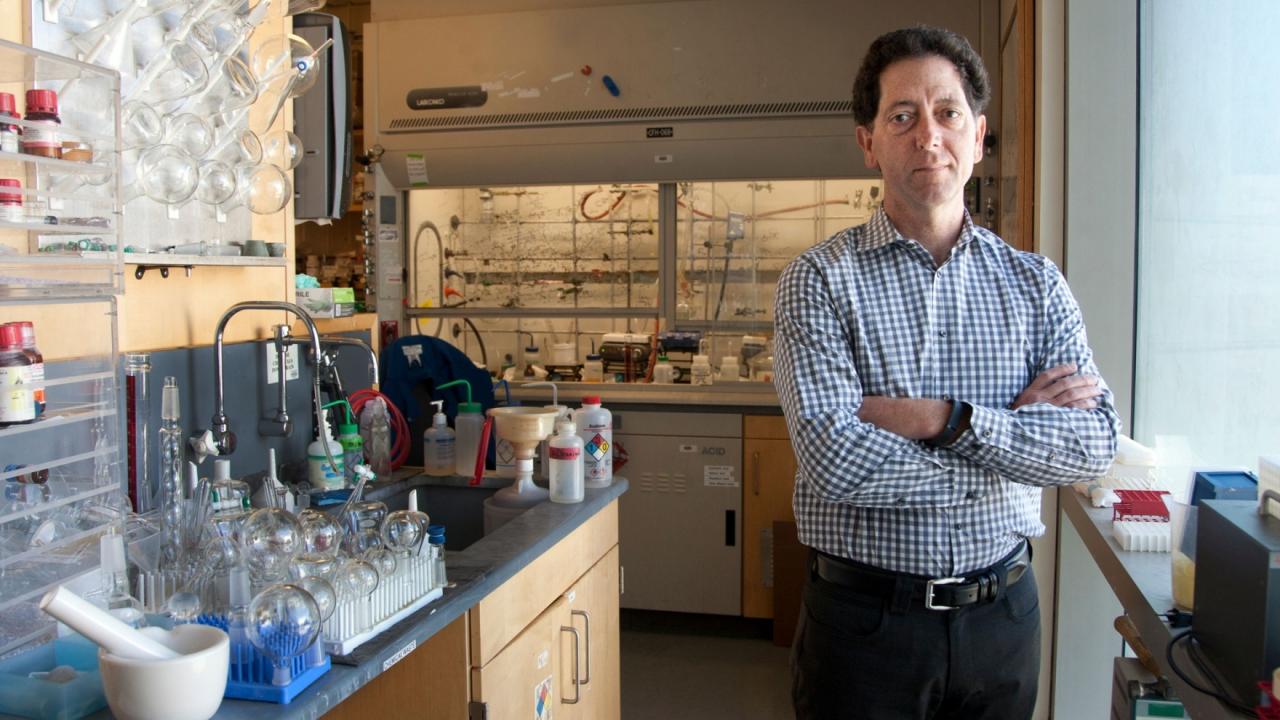
Kevan Shokat in his lab at UCSF's Genentech Hall. Photo by Cindy Chew
Many cancers start with the flip of a switch. For example, the most common mutation in human cancers affects a small signaling protein called K-Ras, which helps tell our cells when to grow and divide; when K-Ras is mutated, its normal on-off mechanism gets stuck in the “on” position, leading to cancer.
For many years, researchers thought K-Ras was the model for how related proteins called GTPases malfunctioned in cancer: by jamming the switch in the “on” position. But new UC San Francisco research is showing that there’s more than one way to break a switch.
Like other GTPases, K-Ras is powered by molecules of GTP to spread its growth signal throughout the cell. Spent GTP becomes inert GDP, which acts as a safety switch that inactivates K-Ras until new molecules of GTP arrive to signal the need for growth again.
Cancer-causing mutations break this switch: a genetic defect in the K-Ras protein prevents it from converting GTP to GDP, forcing K-Ras to continue trumpeting its message through the cell like a zombie Paul Revere, driving the cell to the excessive growth and repeated divisions that eventually form a tumor.
But in a study published April 5 in Cell, Kevan Shokat, PhD, a professor of cellular and molecular pharmacology, and postdoctoral researcher Qi Hu, PhD, discovered that another common cancer-causing mutation in a GTPase called Gαs (or G-alpha-s) subverts the model: it doesn’t just jam the switch in the “on” position, but also disconnects the switch entirely. Gαs can convert GTP to GDP, but still keeps signaling the cell to grow and divide.
“It has been an organizing principle for the field that these mutations trigger cancer by interfering with the on-off switch of these signaling proteins, but our study adds a big wrinkle: these mutations can also keep the enzyme on when the switch is turned off,” Shokat said.
To figure out what was going on, Shokat and Hu had to laboriously puzzle out the 3-dimensional structure of mutant Gαs proteins using a technique called X-ray crystallography, which revealed that GDP-bound mutant Gαs proteins retained their active form.
"In general, scientists try to understand disease-causing mutations in the context of all the studies we’ve done on the normal protein,” Shokat said. “In the case of GTPases, we assume that if it is GTP-bound, the protein is active, and if GDP-bound it's inactive. So the fact that this cancer mutant takes on completely different behavior than a normal GTPase was a complete 180-degree unexpected result."